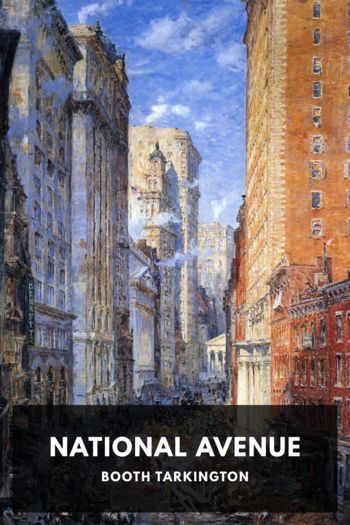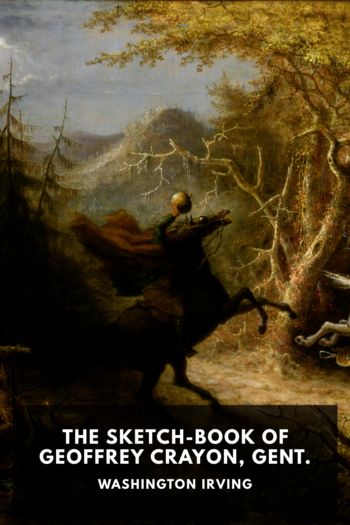Enchanted Evenings:The Broadway Musical from 'Show Boat' to Sondheim and Lloyd Webber by Block, Geoffrey (good story books to read .TXT) 📕

Read free book «Enchanted Evenings:The Broadway Musical from 'Show Boat' to Sondheim and Lloyd Webber by Block, Geoffrey (good story books to read .TXT) 📕» - read online or download for free at americanlibrarybooks.com
Read book online «Enchanted Evenings:The Broadway Musical from 'Show Boat' to Sondheim and Lloyd Webber by Block, Geoffrey (good story books to read .TXT) 📕». Author - Block, Geoffrey
In performing his alchemy Shakespeare condensed the time frame of Brooke’s leisurely romance (3,020 lines) from more than nine months to less than one week. Brooke even allows his Romeus and Juliet a month or two of marital bliss before the fatal duel in which Romeus, in self-defense, kills Tybalt. Muir argues that this striking increase in “speed and intensity … shows the passionate impulsiveness of the two lovers, and [that] it makes them consummate their marriage in the knowledge that they must separate on the morrow.” Geoffrey Bullough, ed., Narrative and Dramatic Sources of Shakespeare, vol. I, Early Comedies, Poems, Romeo and Juliet (London: Routledge & Kegan Paul, 1973), 269–83; Kenneth Muir, Shakespeare’s Sources, vol. I, Comedies and Tragedies (London: Methuen, 1957), 21–30 (quotation on 24).
46. Despite the vocal resources on hand, Berlioz in his “dramatic symphony” (1838–1839) uses the orchestra exclusively to portray the central dramatic events, the Balcony Scene and the Death of Romeo and Juliet. Tchaikovsky’s Fantasy-Overture (1869, revised in 1870 and 1880) contains no vocal parts at all.
47. Harlow Robinson, Sergei Prokofiev: A Biography (New York: Viking, 1987), 302.
48. Most of Zeffirelli’s distortions can be attributed to his predilection to replace Shakespeare’s dialogue with visual images, often with musical accompaniment. Act V exemplifies this approach. In scene 1 he replaces Romeo’s soliloquy (a description of a dream that lasts approximately thirty seconds) with the visual image of Balthasar passing Friar John on the road to Mantua. Gone also from scene 1 is Romeo’s poignant meeting with the Apothecary. Together these deletions reduce Shakespeare’s eighty-five lines to a mere six. Gone entirely is the twenty-nine-line second scene between Friar Laurence and Friar John.
In scene 3 Zeffirelli omits Paris and his duel with Romeo in front of Juliet’s tomb, the dialogue between the watchmen, most of Prince Escalus’s lines, and Friar Laurence’s explanation of the tragic events. Capulet, Lady Capulet, and Montague are seen but not heard. Thus, out of 310 lines Zeffirelli preserves only 160. The time he saves on Shakespeare’s “extraneous” dialogue allows movie audiences to hear additional uninterrupted repetitions of Nino Rota’s “Love Song from Romeo and Juliet.” Ironically, when all is said and sung, the nineteen minutes of Zeffirelli’s act V occupy nearly as much total time as the marginally abbreviated British Broadcasting Corporation version (twenty-two minutes).
49. Guernsey, ed., Broadway Song & Story, 47.
50. Some of the parallels between Shakespeare’s play and its musical adaptation described in the following paragraphs were derived from Norris Houghton, “Romeo and Juliet and West Side Story.”
51. A rare “sugar coating” in the film version occurs when Doc’s drugstore is metamorphosed into a candy store.
52. Isaac Asimov cites numerous textual details to support his assertion that the feud had lost most of its steam before the outset of the play. Asimov’s Guide to Shakespeare (New York: Avenel Books, 1978), vol. 1, 474–98.
53. Guernsey, ed., Broadway Song & Story, 47.
54. West Side Story libretto drafts Nos. 1 and 2, 2–5–9.
55. West Side Story libretto draft No. 3, 2–5–23.
56. Guernsey, ed., Broadway Song & Story, 43.
57. Ibid., 44. Bernstein told Burton in an interview that he “tried giving all the material to the orchestra and having her [Maria] sing an obbligato throughout” and “a version that sounded just like a Puccini aria, which we really did not need.” Even after numerous attempts, he “never got past six bars with it.” Burton, Leonard Bernstein, 275.
58. Original cast, Columbia S 32603; studio cast, Deutsche Grammophon 415253–1/4.
59. In a letter to Felicia, dated July 23, 1957, Bernstein writes that “all the aspects of the score I like best—the big, poetic parts—get criticized as ‘operatic’—and there’s a concerted move to chuck them.” Burton, Leonard Bernstein, 271.
60. Joseph P. Swain, The Broadway Musical, 205.
61. Ibid., 245.
62. Jon Alan Conrad, “West Side Story,” The New Grove Dictionary of Opera, ed. Stanley Sadie (London: Macmillan, 1992), vol. 4, 1146.
63. Banfield, Sondheim’s Broadway Musicals, 37. For a more extended comparison between the viewpoints of Swain and Banfield see my Review Essay, Sondheim’s Broadway Musicals, 20–27.
64. Banfield, Sondheim’s Broadway Musicals, 37.
65. In chapter 2 the notion of a “river family” of motives in Show Boat was considered; a network of motives related to the principal characters of Porgy and Bess was explored in chapter 4.
66. The deceptive chord is usually the submediant or vi chord (e.g., an A minor triad in the key of C). An earlier example of a deceptive cadence to the vi chord occurs in Show Boat’s “Where’s the Mate for Me?,” the first chord on the word “fancy” (see Example 2.5b).
67. See also the discussion of Blitzstein’s meaningfully dramatic treatment of Beethoven’s Egmont Overture in The Cradle Will Rock (chapter 6, pp. 125–28).
68. In the orchestral manuscript that followed shortly, Tony and Maria also sing the four preceding measures reserved for the orchestra in the vocal manuscript and the final version.
69. Bernstein also displaces the second note of “Somewhere” in measures 3, 11, and 27 by raising it an octave.
70. See measures 11, 13, 14–15, 27, 29, 31–32. When they reach the “open air” (m. 6) with “time to spare” (m. 14), the vocal part melodically outlines an E major triad (E-G-B), although Bernstein contradicts this latter tonic resolution with opposing harmony. The harmony that supports “time to spare” once again suggests C minor (C-E-G). Bernstein further dilutes the impact of his first major triads associated with his second motive by immediately following each of its statements with a minor triad in the vocal line.
71. Shakespeare, much like a Greek tragedian, wanted his audiences to know in advance the fate of his “star-crossed lovers.” In the event that they were unfamiliar with this popular and often-told tale, he provided a





Comments (0)